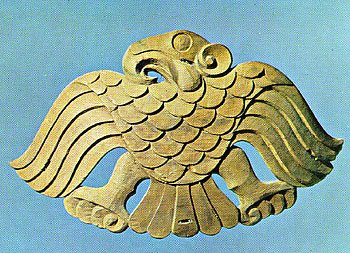________Witnesses said tanks were patrolling the streets of Lhasa
Rioting in Lhasa

The authorities in Tibet have given anti-Chinese demonstrators until Monday to surrender, following violence that officials say left 10 people dead.
"The plot of the separatists will fail," the head of Tibet's government warned as security forces patrolled the main city, Lhasa.
State media said the 10 killed in Friday's clashes had included business people who were "burnt to death".
But exiled Tibetan leaders put the death toll higher and blamed China.
"There have been 30 confirmed deaths until today, and over 100 unconfirmed deaths," the Tibetan government in exile, which is based in northern India, said.
International concern
James Miles, a British journalist in Lhasa, said there were some clashes on Saturday morning, were not on the same scale as Friday.
TIBET DIVIDE
China says Tibet always part of its territory
Tibet enjoyed long periods of autonomy before 20th century
1950: China launched a military assault
Opposition to Chinese rule led to bloody uprising in 1959
Tibet's spiritual leader the Dalai Lama fled to India
'I counted 40 trucks'
Analysis: Beijing's dilemma
Police used tear gas to disperse demonstrators defying a curfew in the old quarter of the city, he said.
Police later cordoned off the centre.

"Lhasa is completely closed and there is Chinese military all over," Danish tourist Bente Walle told Reuters news agency.
In a statement quoted by the state-run news agency Xinhua, the Tibetan government urged "the lawbreakers to give themselves in by Monday midnight" and promised that "leniency would be given to those who surrender".
Tibetan government Chairman Qiangba Puncog denounced the "plot of the separatists".
"We will challenge them firmly, according to law," AFP news agency quoted him as saying.
He said no shots had been fired by police since the start of the unrest.
Officials told Xinhua that those killed on Friday were "all innocent civilians" - among them hotel employees and shop owners.
Western countries have expressed concern at the clashes, and US officials called on the Chinese to act with restraint.
The violence - the worst in Tibet since 1989 - erupted on the fifth day of largely peaceful protests that began on Monday's anniversary of a 1959 uprising against Chinese rule.
Fires broke out near the Jokhang temple, one of the most sacred sites for Tibetan Buddhists, and Xinhua reported that shops, banks and hotels were destroyed.
'Long-simmering resentment'
News agency pictures aired on Saturday showed young men setting fire to a Chinese flag and throwing rocks, while state media said police had fired tear gas to disperse protesters.
Riot aftermath in pictures

The demonstrations - like last those September in Burma - were initially led by Buddhist monks and then attracted crowds of ordinary people.
Chinese officials said the riots had been "organised, premeditated and masterminded" by Tibet's exiled political leader, the Dalai Lama.
He denied the allegations, and urged China to "address the long-simmering resentment of the Tibetan people through dialogue".
Events in Tibet sparked fresh protests in the neighbouring Chinese province of Gansu - which has a large ethnic Tibetan population.
Police fired tear gas near the Labrang monastery on Saturday, a BBC reporter at the scene said.
Tibetan exiles held demonstrations in several countries, including Australia and India.
In Nepal, police arrested about 10 people during a protest in Kathmandu.
BBC China editor Shirong Chen in Beijing says the Chinese government does not want bloodshed five months before staging the Olympic Games.
On the other hand, it cannot allow the monks and other Tibetans to vent their anger as this could be seen as a sign of weakness, he says.

Many Tibetans claim their culture has been diluted or even destroyed by Beijing and they resent the local presence of Han Chinese, China's biggest ethnic group.
China says Tibet has always been part of its territory, although Tibet enjoyed long periods of autonomy before the 20th Century.
From:http://news.bbc.co.uk/2/hi/asia-pacific/7297911.stm

